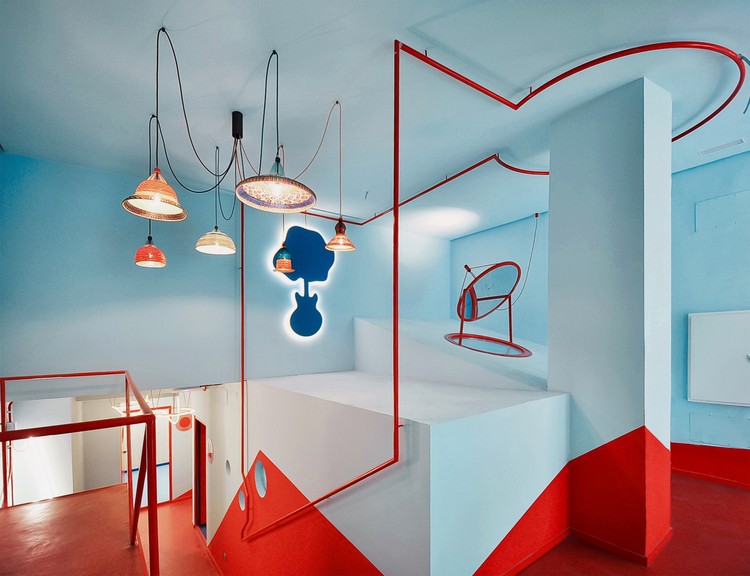
-
Architects: Manuel Collado Arpia
- Area: 2152 ft²
- Year: 2018
-
Photographs:Manuel Collado
-
Manufacturers: Roca, Knauf, Tarkett, Teminsa, petlamp.org

Text description provided by the architects. The project for the musicality school is born from a great conversation about the processes of musical learning and creativity. As a result of this symbiosis, key concepts arose to which the architecture of the new space had to respond: awakening musical curiosity / discovery, the circle, collective practice and community, awareness of space and body plus sustainability.

These concepts are developed through the following tools:
Light and color
Undoubtedly the first key element in the conditioning of space occupying a ground floor or a basement is to provide suitable lighting qualities for the activity. We have sought to obtain as much natural light as possible in the interior, always negotiating with the requirement of acoustic isolation. To achieve this we’ve decided to open a 2 meters diameter circular window in the entrance classroom in order to get light in depth on the distributing spaces. A periscope mirror device has been introduced into the mezzanine classroom to connect interior and exterior sunlight.

Energy
We have worked with energy in an innovative way at different levels; directly with a responsible management of the demand through the design management of the demand through the design. Afterwards, we worked on the harmonization of more subtle energy patterns, combining materials and color, where the energies of the wood and the immersive blue tones of the classrooms are balanced with the fluid and dynamic energy of the common áreas through red floors. This polarity of tones invigorates or calms depending on the activity.

Music and Geometry
The circle has been a constant in the idea of musical learning and works as a unifying geometry at different levels. As a symbol of community in the musical practice, transmitting the type of interactions in groups of this school. Then as an archetypal geometric symbol of unity, where by means of its repetition at different scales, from lighting to openings, it organizes a spatial form of musical composition. The environmental harmony is completed by the triangle that appears in the treatment of the sockets and the square / rectangle of the classroom form. These three geometries are considered foundational in all traditions of environmental knowledges.



















